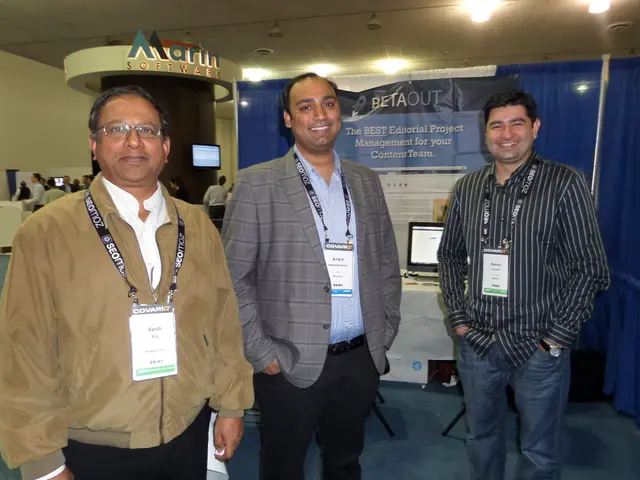Unexpectedly, Context Emerges as the Catalyst Fueling the Speed of Threat Identification and Countermeasures
Throughout my career in the cybersecurity field, I've realized that understanding the situation is critical when dealing with threats. Organizations need to act swiftly when detecting, examining, and mitigating cyberattacks. However, speed isn't the only factor. Rapid responses could lead to incomplete analysis or misguided actions without proper context, leaving systems susceptible.
Context acts as the catalyst for effective threat analysis and mitigation, empowering cybersecurity experts by linking different data, relationships, and environments where cybersecurity incidents occur. It offers a broader perspective on threats by connecting seemingly unrelated incidents to larger patterns. For example, a single login attempt from an unknown IP address might seem harmless. But contextualizing it within a broader picture—such as location, time, and historical behavior—could reveal an ongoing attack or network intrusion.
Analysts may misunderstand a threat's severity, purpose, and scope without context, resulting in delayed responses or misplaced priorities. Adding context to alerts aids analysts in focusing on what truly matters, enabling them to accurately triage threats.
Speeding Up Threat Analysis
Context provides insight into how a threat interacts with a larger IT environment, leading to more effective risk assessment. For instance, knowing if a system is a critical asset or just a test environment can determine a response's urgency.
The context could consist of user behavior, network traffic, historical attack patterns, or threat intelligence feeds from external sources. This information helps security personnel make more informed decisions and reduces the number of false positives or negatives.
Context Reduces Response Time in Mitigation
The time between detecting and neutralizing a threat is crucial. Context allows security teams to identify high-priority incidents and take swift action, reducing the "dwell time" when an attacker can operate inside a network unnoticed. A proactive approach to threats is essential in maintaining an organization's security.
Several tools that leverage AI, ML, and external threat intelligence are available to provide context to cybersecurity incidents. These tools pull data from various sources, such as endpoint security, penetration testing, and other security solutions.
SIEM platforms gather and analyze data across an organization's digital environment. Analysts can quickly comprehend an incident's full scope by providing real-time correlation and contextualization of events. XDR further enhances SIEMs by integrating endpoint, network, and cloud security into one platform, offering a deeper understanding of how threats spread across different vectors.
External intelligence feeds can offer crucial context to internal data, providing information on emerging threats, known attack patterns, and potential vulnerabilities in the organization's current setup.
Context Transforms Data into Meaningful Insights
As cyberattacks become more intricate and persistent, organizations that integrate context into their security strategies transition their defenses from reactive to proactive.
Leveraging a cybersecurity platform that natively integrates security functions can achieve a more holistic approach to threat management. These platforms bypass isolated tools, offering features such as alert aggregation, analytics correlation, and centralized management through a unified dashboard. This approach improves threat visibility and empowers security teams to react more quickly and effectively to threats.
Amalgamating and Managing Alerts and Logs
Security teams are often overwhelmed by alerts and log entries as threats become more sophisticated. Without adequate tools, organizing data to identify relevant threats can be overwhelming and time-consuming, leading to "alert fatigue."
Integrating alert aggregation and log management into a platform helps alleviate this issue by consolidating data from all security layers into a single view. Collecting, filtering, and prioritizing alerts from various sources allows security analysts to focus on the most critical threats while minimizing the distraction generated by low-priority events.
Automating Threat Detection and Analysis
Cybercriminals are constantly evolving their strategies, making it difficult for traditional security tools to keep up. To counter this, cybersecurity solutions employ AI and ML to discover patterns and correlations across different data sources that the human eye might miss. This proactive threat detection allows security teams to identify suspicious behavior before it escalates into a full-blown security incident.
For instance, analytics can track user behavior and network traffic to detect unusual patterns, such as unauthorized access attempts or uncharacteristic data transfers. Once detected, the solution can trigger automated responses, such as isolating affected systems or escalating the issue for further examination. Combining human expertise and AI creates a potent defense against threats.
Data-driven decision making is the core of this swift response. With automated response capabilities, as soon as a threat is identified, the system can take immediate action—such as blocking malicious IP addresses, isolating infected devices, or restricting user access. This speeds up the response process and minimizes the risk of human error during a crisis.
Context is vital in accelerating threat analysis and mitigation efforts by providing crucial background information and relationships within incidents. This approach can enhance the efficiency of response times and ensure resources are allocated effectively. Contextualizing threats helps organizations quickly identify and neutralize them before they escalate and become a breach.
Our Exclusive Executive Council is an invitation-only community for elite CIOs, CTOs, and technology leaders. Am I eligible?
In the context of cybersecurity, David Schiffer's expertise could be invaluable in understanding the importance of context when dealing with threats. Proper context can help cybersecurity experts make more informed decisions and reduce false positives or negatives.
When implementing a threat analysis and mitigation strategy, incorporating external threat intelligence feeds as part of the context can provide crucial information about emerging threats and potential vulnerabilities in an organization's setup.






